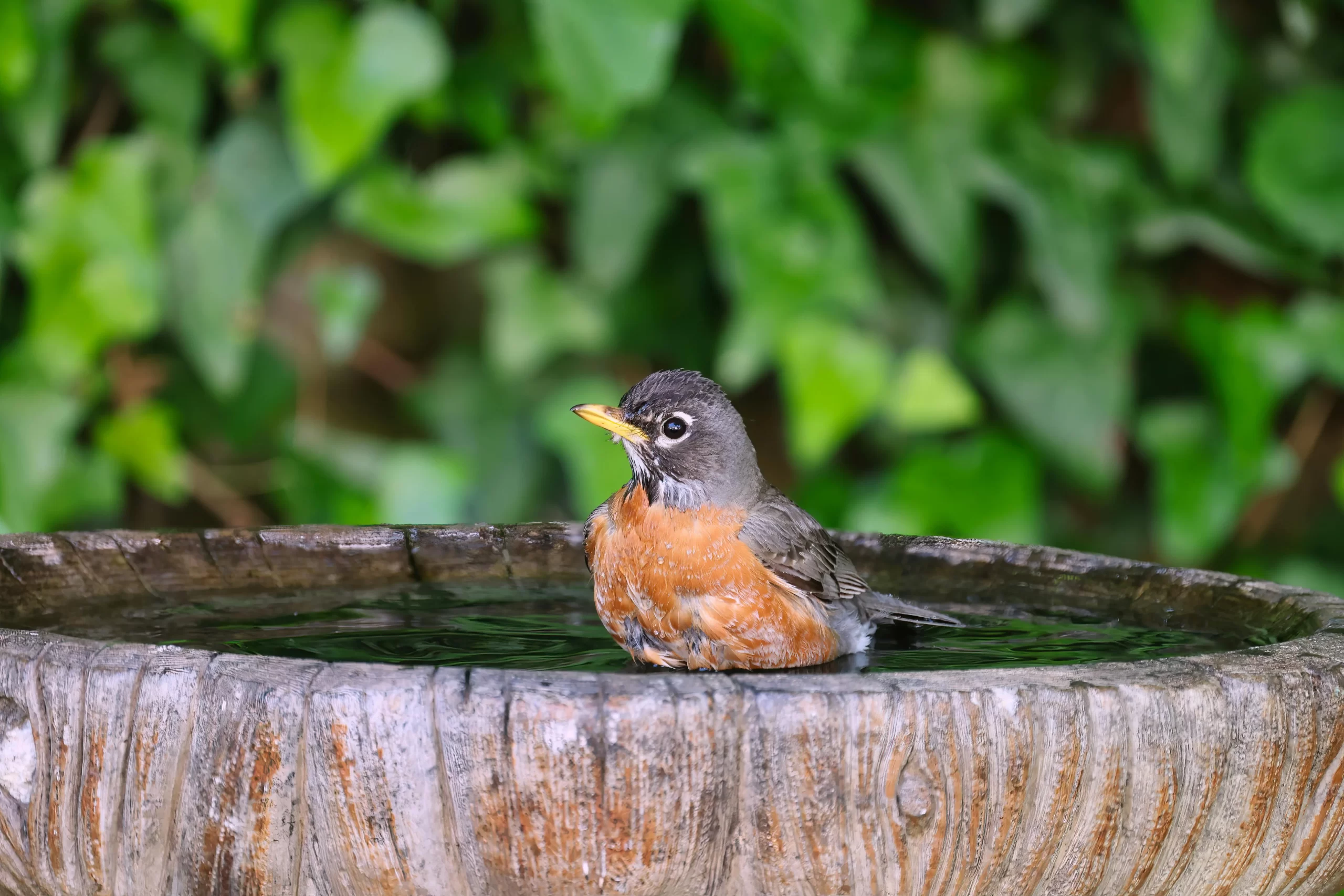Like bird feeders, bird baths are mutually beneficial to both birds and birders and like bird feeders, there are many different types of bird baths. Alas, whether you’ve got a ceramic bird bath, a stone bird bath, a concrete bird bath, or another type, all bird baths require some maintenance to stay clean. Fortunately, those wondering how to clean a bird bath have come to the right place, as I will discuss the most effective and safest ways of cleaning a bird bath.
Bird baths provide backyard birds with a means to get a drink or get clean, while birders enjoy the close looks at some of their favorite birds. Although birds are not cold-blooded, bird baths are a great way for them to cool down on a hot summer day. Given the importance of these fixtures, knowing how to keep them clean is vital.
Ready to learn about how to clean a bird bath? Great, let’s get started!
Table of Contents
How To Keep A Bird Bath Clean
Although many don’t consider the maintenance that goes into keeping a bird bath clean, anyone who has owned a bird bath can attest that these fixtures won’t remain clean for long. Therefore, knowing how to keep a bird bath clean is a primary tenant of bird bath ownership. Not only does knowing how to clean a bird bath keep the fixture looking clean, but it benefits the birds that use the bird bath. So, what are some ways to maintain a clean bird bath?
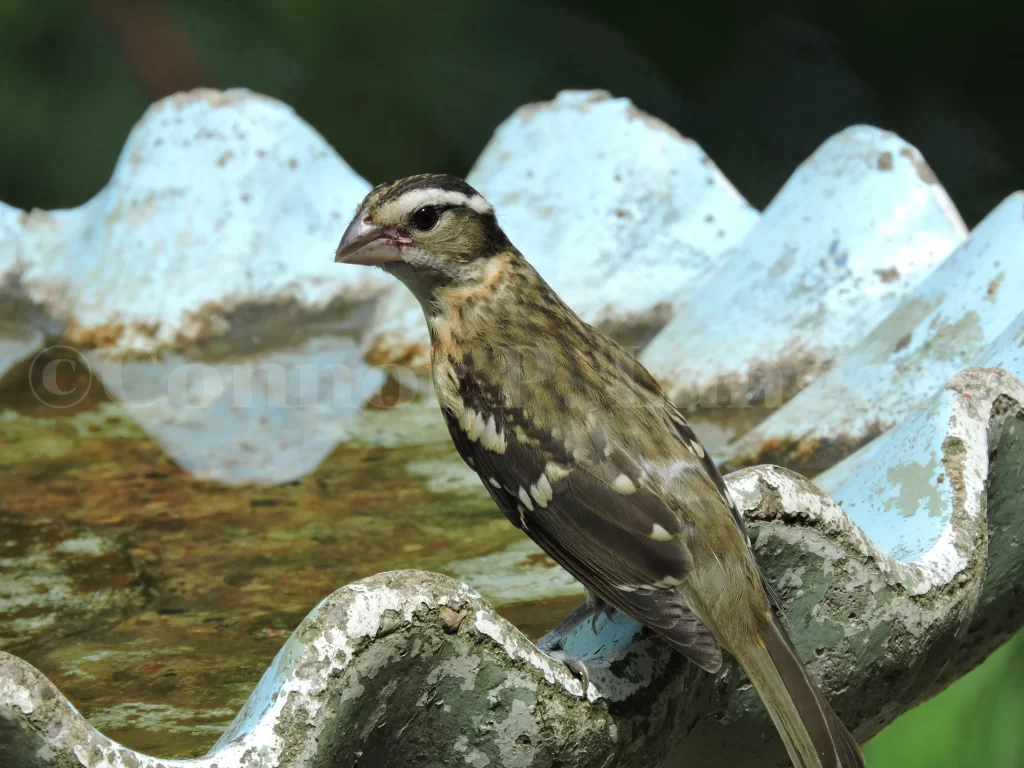
Well, those who own bird baths will first want to ensure that their bird bath is not positioned near something that could easily dirty the structure. For instance, situating your bird bath next to bird feeders or fruit-bearing trees will quickly result in it being filled with seeds or berries. An optimal place to put your bird bath would be a place that is close to cover but not right next to a plant which will make the structure messy.
Birds will—inevitably—make a mess of the bird bath if it receives frequent use, but considering where you place your bird bath can make a big difference when it comes to the number of times in which a bird bath must be cleaned.
How To Prevent Algae In Bird Bath
Those who have owned a bird bath for long enough are doubtlessly familiar with algae. Yes, no matter if you’ve got a stone bird bath or a ceramic bird bath, the growth of algae is difficult to prevent. Luckily, there are some things that you can do to reduce the likelihood of algae growing in your bird bath. Read on if you’re curious about how to prevent algae in bird bath fixtures.
Regularly changing the water within a bird bath is the easiest way to prevent algal growth. It doesn’t take long for algae to multiply once a spore ends up in a bird bath. Therefore, changing the water once every three days will be a wonderful way to combat the presence of algae.
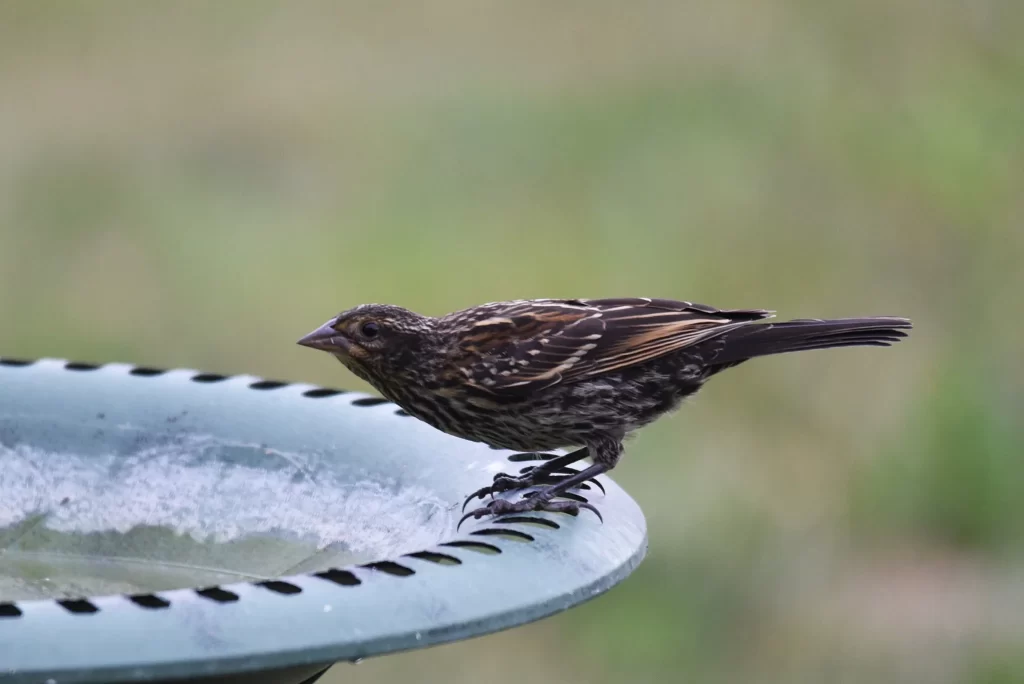
Those inclined to take their fight against algae up a notch may be interested in purchasing an aerator for their bird baths. Algae thrive in pools of small-moving or stagnant water, so it’s no surprise that it frequently grows in bird baths. Luckily, an aerator creates a current within a bird bath and establishes a flow that birds love and algae hate.
Of course, there are chemicals on the market that are designed to prevent the growth of algae. However, many of these chemicals are unsafe for birds, and it would be irresponsible to add them to a fixture from which birds regularly drink.
If you’re wondering how to clean a bird bath with algal growth, immediately drain the water and scrub the bird bath with hot water. After you’ve done this, you can consider cleaning the bird bath with some of the following options.
Will Irish Spring Soap Hurt Birds?
Using Irish Spring Soap to clean out bird baths is a surprisingly popular trend, but many wonder if using this product is safe for birds. So, what would happen if someone were to use this soap to clean their bird bath? Will Irish Spring Soap hurt birds, or is this product safe?
Truthfully, there have been no studies on the impact that Irish Spring Soap may have on birds, so it seems that its safety is up for debate. Irish Spring Soap is commonly lauded for being a natural soap, but the reality is not so cut and dry. Although some varieties of this popular soap are derived from natural ingredients, standard Irish Spring Soap is not natural.
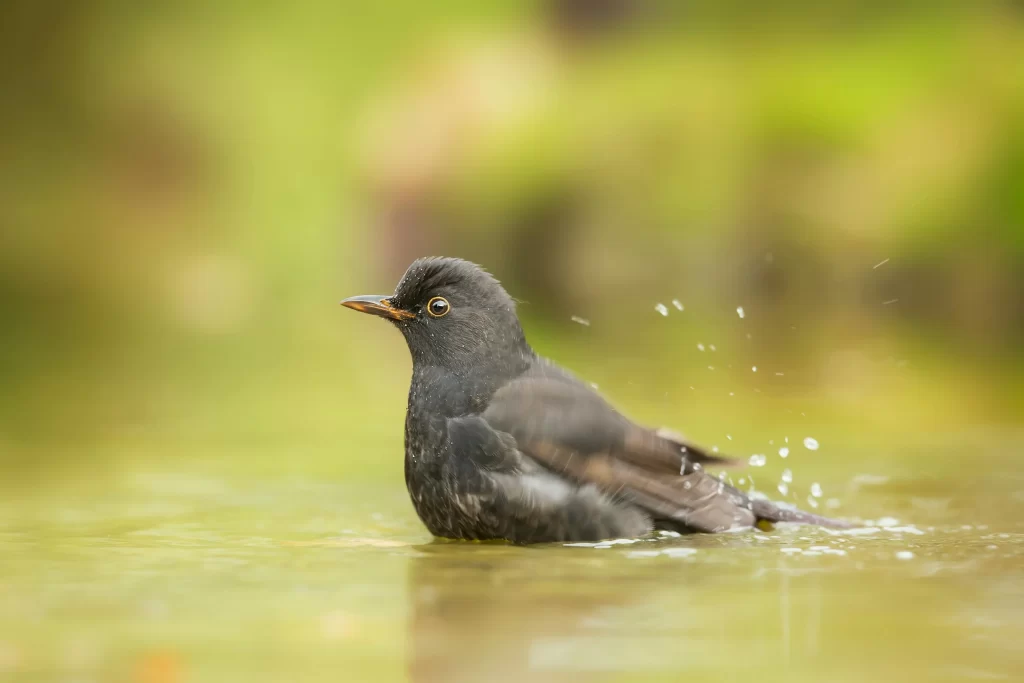
Now, this does not make the soap toxic simply because many types are not derived from natural ingredients. However, some of the ingredients within Irish Spring Soap may do more harm than good for birds.
Ultimately, I would personally not use Irish Spring Soap to clean my bird bath. That said, if you do choose to clean a bird bath with this soap, be sure that you thoroughly rinse the residual soap and suds from the bath before refilling it with water.
Will Baking Soda Hurt Birds?
Baking soda will commonly top the list of cleaning agents that are regarded as safe and natural. However, some may be skeptical about the safety of this product. So, will baking soda hurt birds?
Alas, baking soda is not the perfect cleaning product that many make it out to be, as this compound can be moderately harmful to birds. Okay, but how does baking soda harm birds? Well, just as baking soda can irritate the skin of your precious pets, this compound may be irritating to birds.
Birds have very sensitive skin, and it doesn’t take much to disrupt the delicate balance that a bird’s skin must maintain. A bird that comes in contact with baking soda may develop dry skin shortly after the interaction. Although this will not kill the bird, it will disrupt its daily routines.
Moreover, accidental ingestion of baking soda is detrimental to birds. Again, this behavior will not kill a bird but can disrupt regular digestion. Additionally, some claim that baking soda could dry out a bird’s lungs, making it difficult for them to breathe.
Therefore, if you’re wondering, “Will baking soda hurt birds?” know that this compound may very well harm your feathered friends.
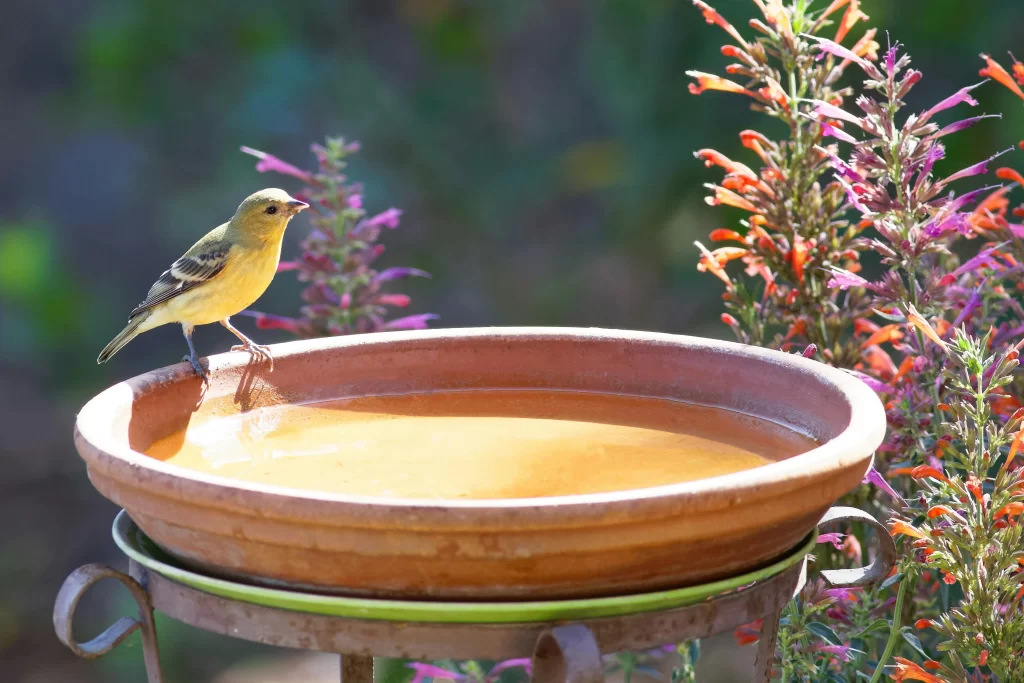
How To Clean A Bird Bath With Baking Soda
Although I just provided several reasons why baking soda may be harmful to birds, many still wonder about how to clean a bird bath with baking soda. Cleaning a bird bath with baking soda can be done safely and responsibly even though baking soda can be bad for birds. Here’s how:
First, drain all of the water out of your bird bath. Then, create a mixture of equal parts baking soda and water. You can then take a sponge and scrub the mixture onto stains or bird poop that is lingering on the bird bath. Allowing the mixture to sit for a few minutes can help to eat away at the stain.
After you’ve scrubbed away all of the stains, thoroughly rinse the bird bath before again filling it with water. This will remove the residual baking soda and create a safe environment for birds.
Does Vinegar Hurt Birds?
Vinegar is commonly proposed as a cleaning solution for those considering how to maintain their bird baths, but does vinegar hurt birds?
This is a reasonable question to ask for those considering cleaning a bird bath with vinegar. Fortunately, vinegar is widely regarded as a safe product to use around birds. Indeed, things like apple cider vinegar actually provide an array of benefits to birds.
Now, apple cider vinegar is more expensive than distilled white vinegar, so many wonder about the safety of the latter. Will vinegar harm birds if it’s not apple cider vinegar?
Although distilled white vinegar is fairly acidic, this product is not considered to be a harmful product to birds, making it a great cleaning agent for bird baths.
Now, let’s learn about how to clean a bird bath with vinegar.
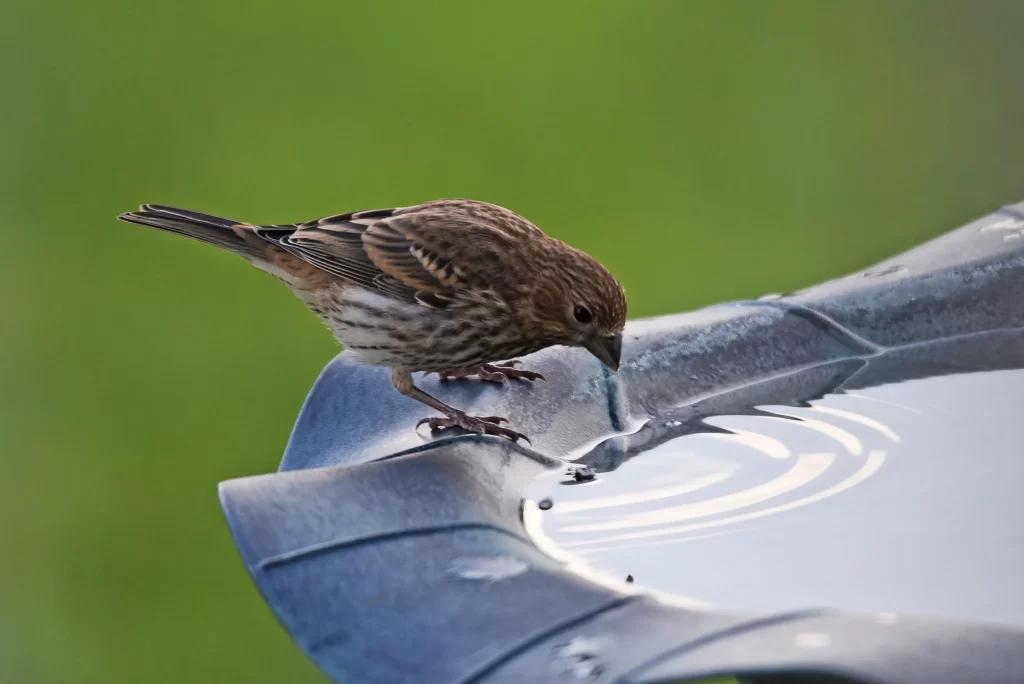
Cleaning A Bird Bath With Vinegar
Now that we know the answer to the question, “Does vinegar harm birds?” is no, we can discuss how to best use vinegar to clean bird baths. Luckily, cleaning a bird bath with vinegar is a simple, effective way to remove stains and mineral deposits within bird baths.
If you’re wondering how to clean a bird bath with vinegar, create a cleaning solution with 9 times the water as vinegar. You can then empty the water from your bird bath and replace it with this solution. Allowing the mixture to sit for a few hours will be ideal. In the interim, you may want to cover your bird bath with a bag to prevent birds from using it. After a few hours, empty the mixture and scrub the bird bath with a sponge or brush. You can then rinse out the fixture before filling it once again.

